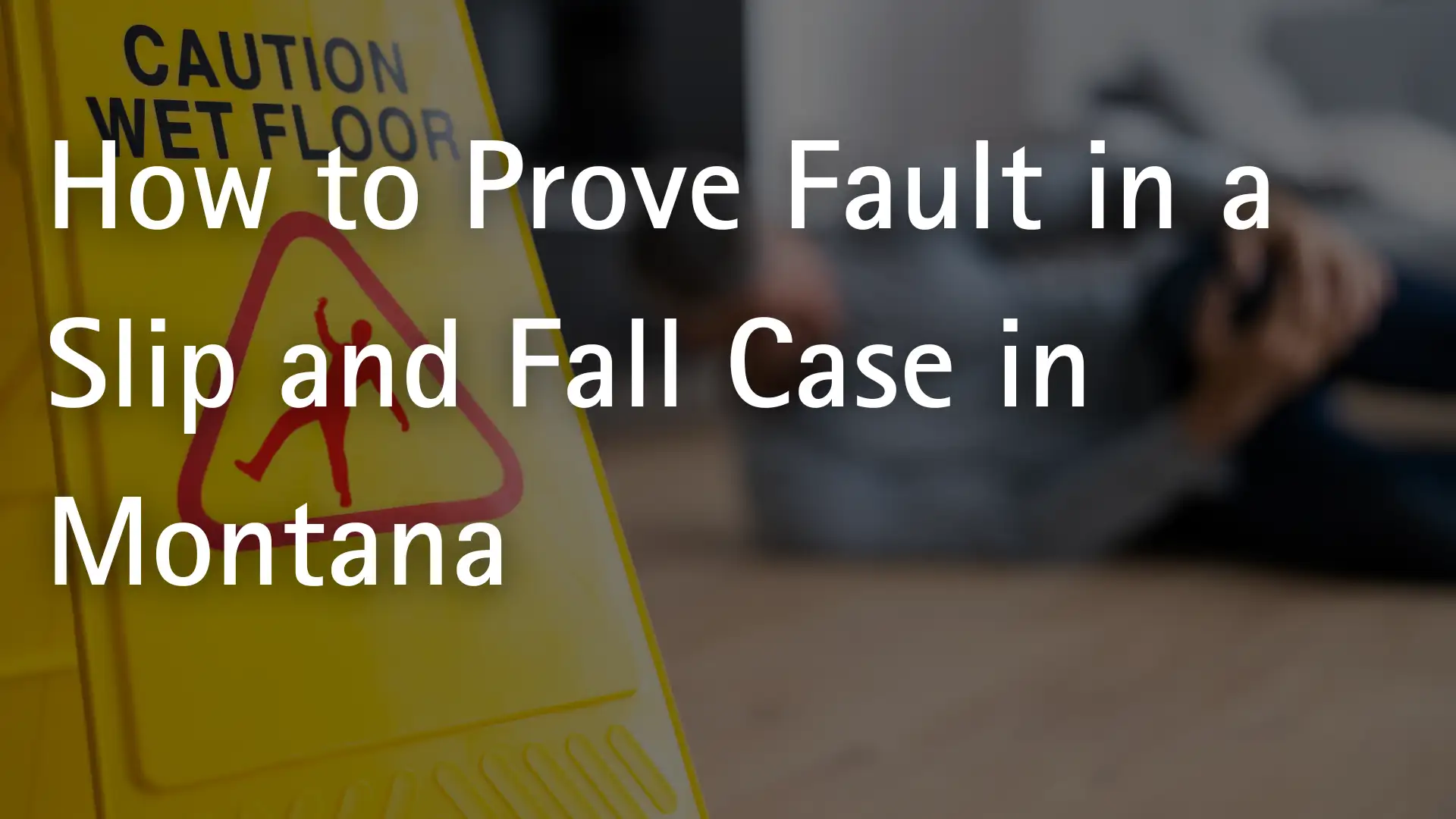When you get into a slip and fall accident, do not handle it on your own in Montana; you may sustain serious injuries and incur significant financial burdens. Thankfully, if your accident happened because of unsafe conditions on someone else’s property, you may have legal grounds to claim compensation for your accident. However, you need to prove that the property owner was at fault for the accident—an essential step in proving fault in slip and fall cases and building a strong claim.
Why Proving Fault Matters in Slip and Fall Cases
Proving fault in slip and fall cases, a subcategory of premises liability law, means establishing that the property owner acted negligently—in other words, the owner failed to exercise ordinary care or skill that you would otherwise expect from a manager. If you fail to prove fault, you likely cannot recover compensation for your injuries, medical expenses, lost wages, or pain and suffering.
To prove fault, you must demonstrate four key elements of negligence: duty of care, breach of duty, causation, and damages.
- Property owners have a duty of care to keep their premises safe and free from hazards.
- When owners fail to maintain safe conditions or warn visitors of known dangers, they breach this duty.
- To claim compensation, you must prove that the owner’s breach of duty directly caused your accident.
- You must also prove that the breach resulted in damages, such as medical bills and lost income.
Montana has a comparative fault law. Under this law, if you caused a part of the accident, you can still recover compensation if your percentage of fault does not exceed 50%. The more documentation you gather, the stronger your case—especially when understanding how to prove slip and fall injury liability and damages.
Evidence to Prove Fault in a Slip and Fall Case
A strong slip and fall claim requires comprehensive evidence demonstrating the property owner’s comparative negligence.
The more documentation you gather, your case becomes stronger—especially when proving fault in slip and fall cases.
Photographic and video evidence can capture the specific hazard that caused your fall, such as wet floors, uneven pavement, poor lighting, or debris in walkways. If available, video surveillance footage can also provide objective evidence of exactly how the accident occurred.
Witness testimony can provide independent accounts of the incident. Collect contact information from anyone who saw the accident, including other customers, employees, or bystanders. Their statements can help establish what happened and support your version of events.
Suppose you believe the property owner knew about the dangerous condition but failed to fix it. In that case, maintenance records and inspection logs can show a pattern of negligence or demonstrate that the owner had sufficient time to fix the hazard but failed to do so.
Medical documentation can help connect your injuries directly to the fall and prove causation. Your treating physician can provide testimony about the accident’s impact on your injuries.
Tips to Strengthen Your Slip and Fall Claim
Take immediate action after a slip and fall accident to improve your chances of proving fault and obtaining fair compensation. After all, time-sensitive evidence can disappear quickly—a phenomenon known as the “spoliation of evidence.”
Document everything at the scene if you physically can. Use your phone to photograph the hazardous condition from multiple angles, including wide shots showing the overall area and close-ups of the specific hazard. Note the lighting conditions, weather, and any lack of warning signs.
Report the incident immediately to the property owner, manager, or security personnel. Insist on an official incident report and request a copy.
Seek medical attention promptly, even if your injuries seem minor initially. Follow all treatment recommendations and keep detailed records of any medical expenses.
Preserve physical evidence when possible, such as any damaged clothing or shoes. Do not repair or replace damaged personal items until your attorney advises you to do so.
Avoid giving recorded statements to insurance companies without legal representation, as insurance adjusters may use your words against you to minimize or deny your claim. Instead, refer all communication to your attorney for your rights once you have retained legal counsel.
Keep detailed records of all expenses related to your accident, including medical bills, prescription costs, transportation to medical appointments, and lost wages.
Do not post about your case on social media, as insurance companies often monitor social media accounts for evidence that contradicts injury claims.
Please read more about claims for the elderly here: How to Handle Personal Injury Claims for the Elderly in Montana.
Get Help with Proving Fault in Slip and Fall Cases at Travis & Brann, PLLP
If you need to prove fault for your slip and fall accident, trust the experienced slip and fall injury attorneys in Kalispell at Travis & Brann, PLLP to build your strongest case. We have served clients throughout the state and work diligently to investigate accidents, gather crucial evidence, and negotiate with insurance companies to achieve favorable outcomes for our clients.
Don’t navigate the legal process alone; our team is here. Call our slip and fall attorneys at Travis & Brann, PLLP at (406) 752-7550 or contact us online to schedule a free consultation, and let us help you pursue the compensation you deserve.
Related Post
How Long After an Accident Can You Sue in Montana?
Dealing with Broken Bones and Fractures After a Car Accident


